Cheres Fleurs
-
Ships in 2 to 3 weeks
Details
Description
SKU: AN.AMP-0285
Composed by Jules Massenet. Edited by Richard Bloesch and William Hatcher. Octavo. Alliance Music Publications #AMP 0285. Published by Alliance Music Publications (AN.AMP-0285).Massenet/Bloesch.
Jules Massenet (1842-1912) is remembered today for several operas that remain in the activerepertoire (especially Herodiade, Manon, Le Cid, Werther, and Thais). His other vocalworks areless well known. In addition to four large sacred oratorios, Massenet composed a number ofreligious and secular choral works, including a Requiem Mass. More than 200 songs flowed fromhis pen. To a subset of works written for vocal duos, trios, and quartets belongs Chansons desBoisd'Amaranthe, his first cycle for vocal quartet. It was composed in 1900 and published in1901. Inthe last decade of his life, Massenet often performed this work, sometimes as conductor, at othertimes as pianist.
The first movement, 0 bon printemps, a trio for soprano, contralto, and tenor, welcomes allthegifts of springtime. The rippling piano accompaniment seems to portray the rustling of newleaves.The happy mood is tinged with regret at the close, where the poet asks of spring, But what doyougive to me?
In the second movement, Oiseau des Bois, a duet for soprano and contralto, the poet speaksto alittle bird, which is delighting him with its song. Again, the bantering innocence of the scene isclouded by a reference to the bird's companion, which, like the poet's, perhaps should not betrusted.
The third movement, Cheres fleurs, the first movement for all four voices, finds thepoetspeaking to the spring flowers. He warns them about the wind, which speaks too much offaithful love,rldquo; and reminds them that faithful love speaks less. The musical style of thismovement is in stark contrast to the preceding movements. After a piano introduction, thevoices, unaccompanied, sing music that evokes the spirit of the Renaissance madrigal.
The fourth movement, 0 ruisseau, conjures up a scene in which the little stream and therose bushexchange tender words of love. The poet hopes they will teach these words of love to him. HereMassenet writes for a trio of soprano, contralto, and tenor. The tenor voice is given the primarymaterial. The other two voices echo his statements (as the composer indicates: comme un echolointain).
The fifth movement, Chantez, for all four voices is a fitting climax to the cycle. Here thepoet revels in the delights of springtime without any reservations or distractions. The spring birds areexhorted to sing of love and pleasure and of the divine work and its beauty . Massenet suppliesan effervescent piano part, which undergirds the exuberant and high-spirited vocal lines.
Jules Massenet (1842-1912) is remembered today for several operas that remain in the activerepertoire (especially Herodiade, Manon, Le Cid, Werther, and Thais). His other vocalworks areless well known. In addition to four large sacred oratorios, Massenet composed a number ofreligious and secular choral works, including a Requiem Mass. More than 200 songs flowed fromhis pen. To a subset of works written for vocal duos, trios, and quartets belongs Chansons desBoisd'Amaranthe, his first cycle for vocal quartet. It was composed in 1900 and published in1901. Inthe last decade of his life, Massenet often performed this work, sometimes as conductor, at othertimes as pianist.
The first movement, 0 bon printemps, a trio for soprano, contralto, and tenor, welcomes allthegifts of springtime. The rippling piano accompaniment seems to portray the rustling of newleaves.The happy mood is tinged with regret at the close, where the poet asks of spring, But what doyougive to me?
In the second movement, Oiseau des Bois, a duet for soprano and contralto, the poet speaksto alittle bird, which is delighting him with its song. Again, the bantering innocence of the scene isclouded by a reference to the bird's companion, which, like the poet's, perhaps should not betrusted.
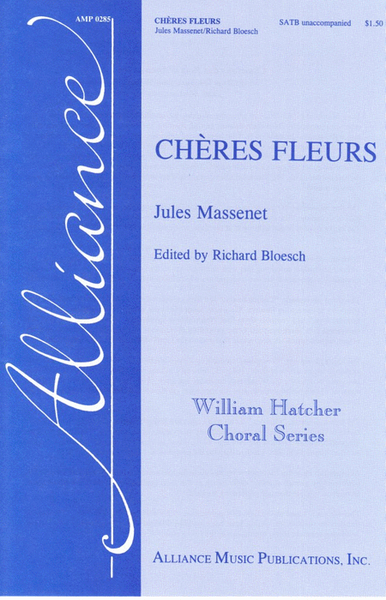
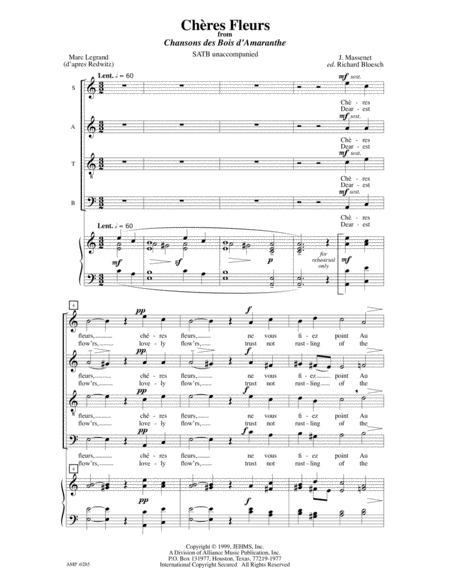
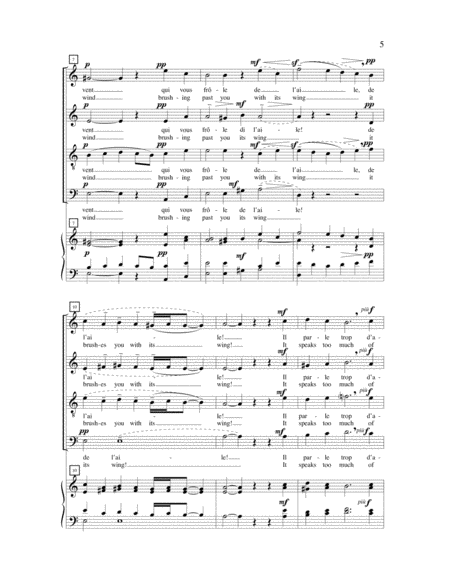
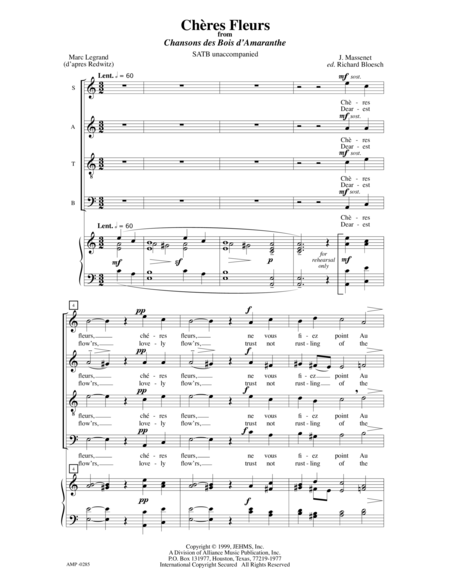
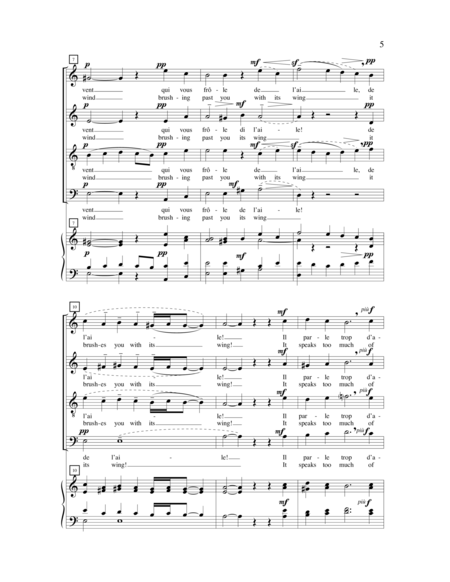
 Share
Share